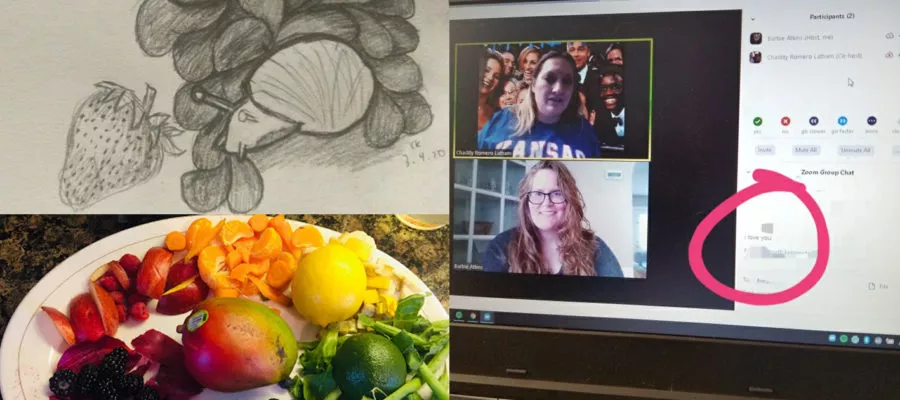“Snail,” created at home by a Topeka eighth grade; an edible color wheel by a Topeka sixth grader; a student signs off from an online art club with an “I love you” to art teachers Chastity Romero Latham and Barbie Atkins.
When Kansas educators began planning for continuous learning during the pandemic, art teacher Renee Fritts spent a “few sleepless nights” wondering how to engage her young students and families in remote lessons.
“I couldn’t even wrap my head around how I was going to present things,” she said.
The challenge was unprecedented. But Fritts and her art colleagues across the state focused on creativity and connectivity—the values they care most about—to help students feel supported.
Fritts had at least one advantage—she was accustomed to adaptation. Before schools physically closed, she divided her time between three elementary schools and about 1,000 students in Derby, Kan. She also had close relationships with her colleagues in music and physical education, so they collaborated through Padlet, a virtual project management system, to create an activity plan for “specials.”
“We just wanted to go in lightly and make it into a game,” says Fritts. For art, she focused on simple activities that worked with materials students would have at home, such as creating “art you can eat” or a new cover for a favorite book. For every completed activity, students earned a virtual mile. By May, they had traveled nearly half the globe!
Across Kansas, art teachers put social-emotional learning at the forefront. “Drawing can be therapeutic,” and it doesn’t require a lot of materials, says Kim Schneweis, an art teacher at Hays Middle School, in Hays, Kan., and a member of the Kansas NEA Board of Directors.
Art teachers and students often form tight bonds through the creative process. It’s hard to duplicate those connections across Zoom or other platforms—but those relationships are more vital than ever in tough times.
“My No. 1 goal has always been relationships,” says Barbie Atkins, art teacher at Topeka’s Robinson Middle School. “Yes, I’m trying to teach standards and adhere to rigor just like I would in the classroom, but my students are experiencing this global, traumatic event, and I’m [trying] to engage them as much as possible.”
That’s why Atkins and her Topeka colleague, Chastity Romero Latham, collaborated to create the same secure, creative space for students online that they fostered in their classrooms. Together, they invited their art club students to join a combined, virtual art club, where they could participate in weekly drawing challenges and just hang out. “Now more than ever, kids need an outlet like that,” Atkins says.
“Barbie and I try so hard to build relationships with our kids,” says Romero Latham, adding that 40 students attended the first meeting. “We wanted to let them talk about art, create art, and have something to look forward to at this time.”
Same for their teachers! “I’m very emotional,” Atkins admits. “I get teary-eyed seeing them on Zoom. For many of them, Robinson was their safe place.” She worries about her students staying home, possibly without the same support.


